Gatekeeper Butterfly - Pyronia tithonus
Phylum: Arthropoda - Class: Insecta - Order: Lepidoptera - Family: Nymphalidae
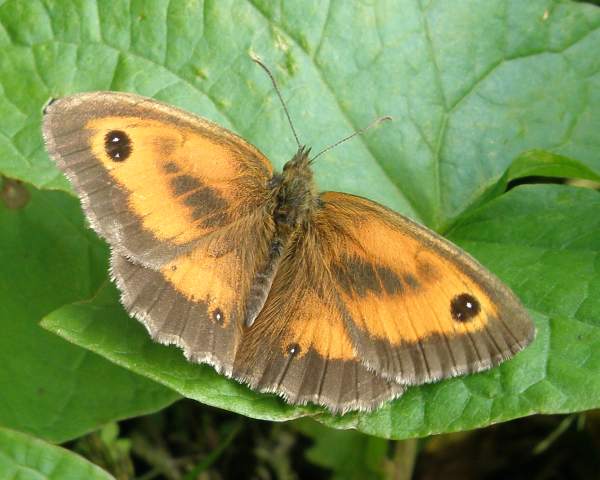
Identification
This butterfly usually rests with its wings open, so the underside is less frequently visible. The male, shown here, has broad sex brands, comprising scent-producing scales, known as androconia, on its forewings; the female has no such strips and is evidently much more of an orange butterfly.
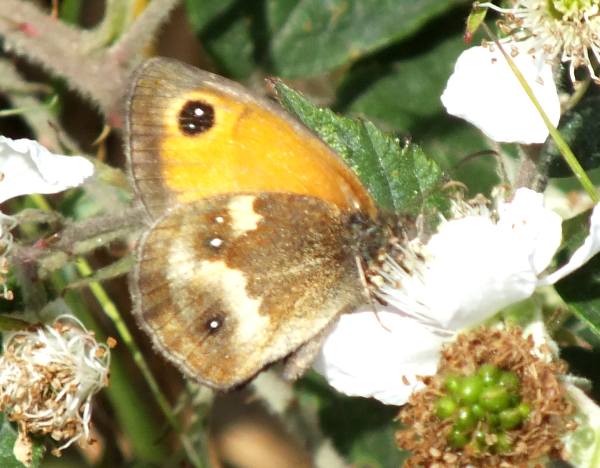
Unlike many 'browns', the Gatekeeper often rests with its wings open, which is very helpful when you are trying to determine the gender of this butterfly. There is also a wingspan difference between the sexes - but who can estimate size with any degree of accuracy when a butterfly is in flight? Males, with their wingspan typically 4cm, are slightly smaller than females, which usually have a wingspan of about 4.5cm.
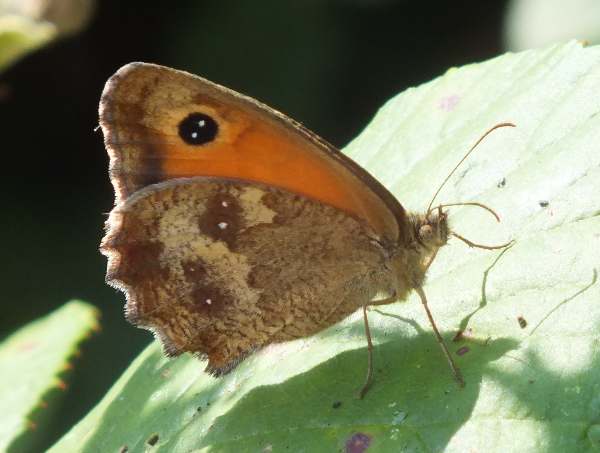
Habitat
Also known as the Hedge Brown butterfly, the Gatekeeper is fond of brambly hedgerows and ragwort-infested scrubland where nectar-bearing flowers are plentiful.
Flight period
This short-lived butterfly of high summer emerges from the beginning of July onwards but by the end of August there are very few if any left to see.
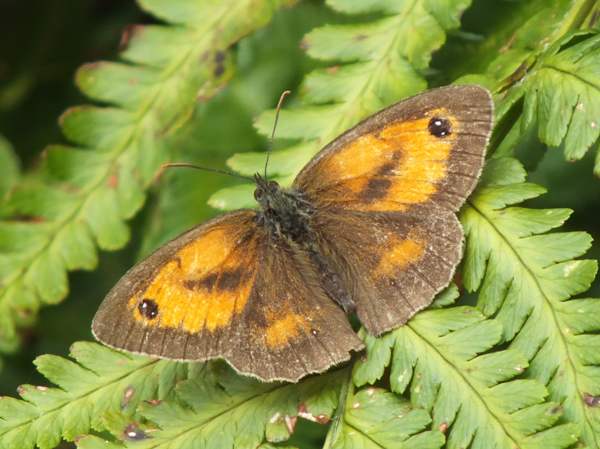
Distribution
Gatekeepers are seen throughout England, but they are more abundant in southern counties. In Wales the Gatekeeper is fairly common in the south and west but is less frequently seen the further north you go. In Scotland the Gatekeeper is seen very rarely, and the same is true of most of Ireland, although along the coastal strip of southern Ireland there are reasonable numbers of this lovely golden butterfly.
Lifecycle
The larval foodplants of the Gatekeeper are various grasses, in particular the various bents (Agrostis spp), meadow-grasses (Poa spp) and fescues (Festuca spp). The egg-laying habitat is rough grassland at hedged field margins, in woodland rides, fire breaks and larger clearings, and in scrubby grassland and wasteland where bushes have sprung up among grasses.
Female Gatekeepers drop their straw-yellow eggs from the air onto or near to suitable grass tussocks, generally in the shade of a small bush or a hedge. The eggs darken and become mottled brown-grey as, over a period of two to three weeks, the larvae develop inside the egg case. Once they have eaten their way out of the egg case, the tiny caterpillars consume their foodplant during daylight. After the first moult, the caterpillars crawl deep down into the base of their grass tussock and there they hibernate until the following spring. On waking, the green (sometimes brown) caterpillars become nocturnal feeders. They pupate in June or early July after their fourth moult, and the adult butterflies emerge from their chrysalises about three weeks later.
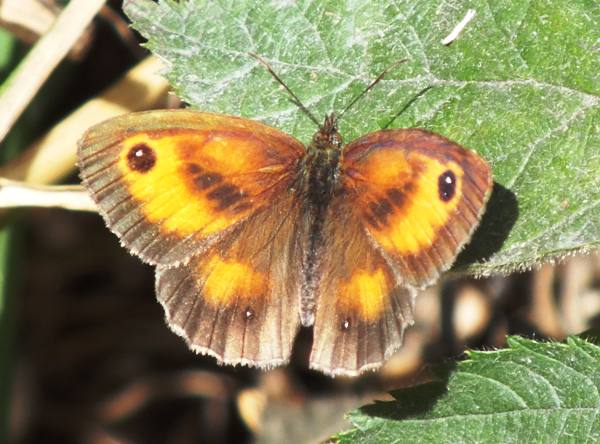
Similar species
There are small white spots in the grey-brown mottling on the hindwing of the Gatekeeper. The Southern Gatekeeper, Pyronia cecila, is similar, but it has a more silvery mottled underside to its rear hindwings without the white spots.
Studying butterflies and moths...
Excited at the prospect of flyfishing? So are we, and we're pretty sure you would find the Winding River Mystery trilogy of action-packed thrillers gripping reading too. Dead Drift, Dead Cert, and Dead End are Pat O'Reilly's latest river-and-flyfishing based novels, and now they are available in ebook format. Full details on our website here...
Buy each book for just £4.96 on Amazon...
Please Help Us: If you have found this information interesting and useful, please consider helping to keep First Nature online by making a small donation towards the web hosting and internet costs.
Any donations over and above the essential running costs will help support the conservation work of Plantlife, the Rivers Trust and charitable botanic gardens - as do author royalties and publisher proceeds from books by Pat and Sue.
